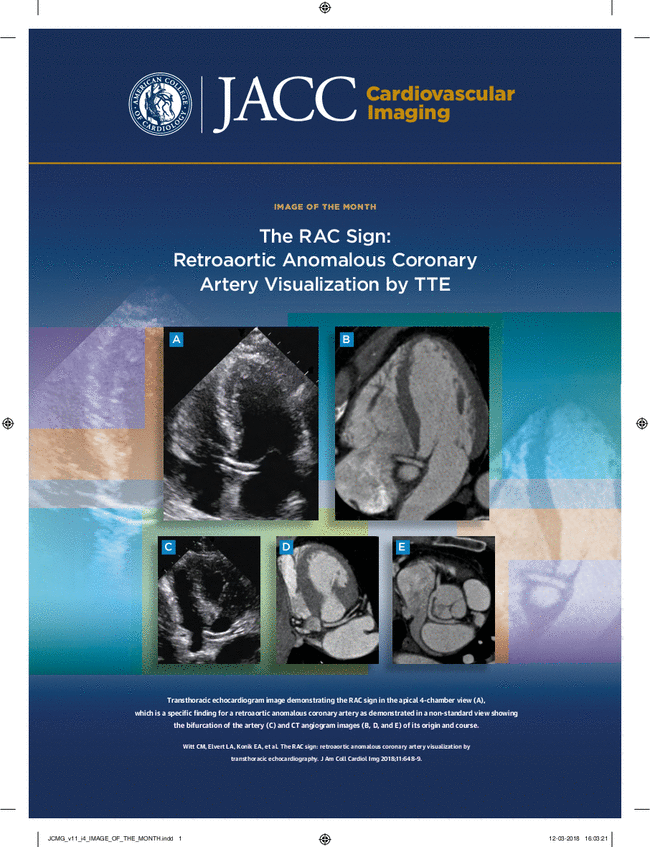心脏淀粉样变的过去十年:病理生理学、诊断和量化、预后、治疗策略和监测反应的研究进展。
IF 15.2
1区 医学
Q1 CARDIAC & CARDIOVASCULAR SYSTEMS
引用次数: 0
摘要
心脏淀粉样变性是一种独特的疾病过程,其特征是淀粉样纤维沉积在心肌细胞外空间。多模态心脏成像的进步使准确诊断和促进及时启动疾病改善治疗成为可能。此外,多模态成像的快速发展丰富了对潜在发病机制的理解,增强了预后,并导致基于成像的反映淀粉样蛋白负担的标志物的发展,这在评估治疗反应时越来越重要。传统的治疗方法侧重于减少淀粉样蛋白的形成和随后的心脏病过程的稳定,而新的药物正在开发中,以加速免疫介导的淀粉样蛋白原纤维从心脏中去除。在这种情况下,追踪淀粉样蛋白负荷随时间变化的能力至关重要。尽管先进的成像技术已经显示出追踪治疗反应的有效性,但未来的研究重点是通过使用人工智能来提高精度,从而增加对治疗过程中早期变化的检测。本文章由计算机程序翻译,如有差异,请以英文原文为准。
The Last Decade in Cardiac Amyloidosis
Cardiac amyloidosis represents a unique disease process characterized by amyloid fibril deposition within the myocardial extracellular space. Advances in multimodality cardiac imaging enable accurate diagnosis and facilitate prompt initiation of disease-modifying therapies. Furthermore, rapid advances in multimodality imaging have enriched understanding of the underlying pathogenesis, enhanced prognostication, and resulted in the development of imaging-based markers that reflect the amyloid burden, which is of increasing importance when assessing the response to treatment. Whereas conventional therapies have focused on reducing amyloid formation and subsequent stabilization of the cardiac disease process, novel agents are being developed to accelerate the immune-mediated removal of amyloid fibrils from the heart. In this context, the ability to track changes in the amyloid burden over time is of paramount importance. Although advanced imaging techniques have shown efficacy in tracking the treatment response, future research focused on improved precision through use of artificial intelligence may augment the detection of changes earlier in the course of treatment.
求助全文
通过发布文献求助,成功后即可免费获取论文全文。
去求助
来源期刊

JACC. Cardiovascular imaging
CARDIAC & CARDIOVASCULAR SYSTEMS-RADIOLOGY, NUCLEAR MEDICINE & MEDICAL IMAGING
CiteScore
24.90
自引率
5.70%
发文量
330
审稿时长
4-8 weeks
期刊介绍:
JACC: Cardiovascular Imaging, part of the prestigious Journal of the American College of Cardiology (JACC) family, offers readers a comprehensive perspective on all aspects of cardiovascular imaging. This specialist journal covers original clinical research on both non-invasive and invasive imaging techniques, including echocardiography, CT, CMR, nuclear, optical imaging, and cine-angiography.
JACC. Cardiovascular imaging highlights advances in basic science and molecular imaging that are expected to significantly impact clinical practice in the next decade. This influence encompasses improvements in diagnostic performance, enhanced understanding of the pathogenetic basis of diseases, and advancements in therapy.
In addition to cutting-edge research,the content of JACC: Cardiovascular Imaging emphasizes practical aspects for the practicing cardiologist, including advocacy and practice management.The journal also features state-of-the-art reviews, ensuring a well-rounded and insightful resource for professionals in the field of cardiovascular imaging.
 求助内容:
求助内容: 应助结果提醒方式:
应助结果提醒方式:


